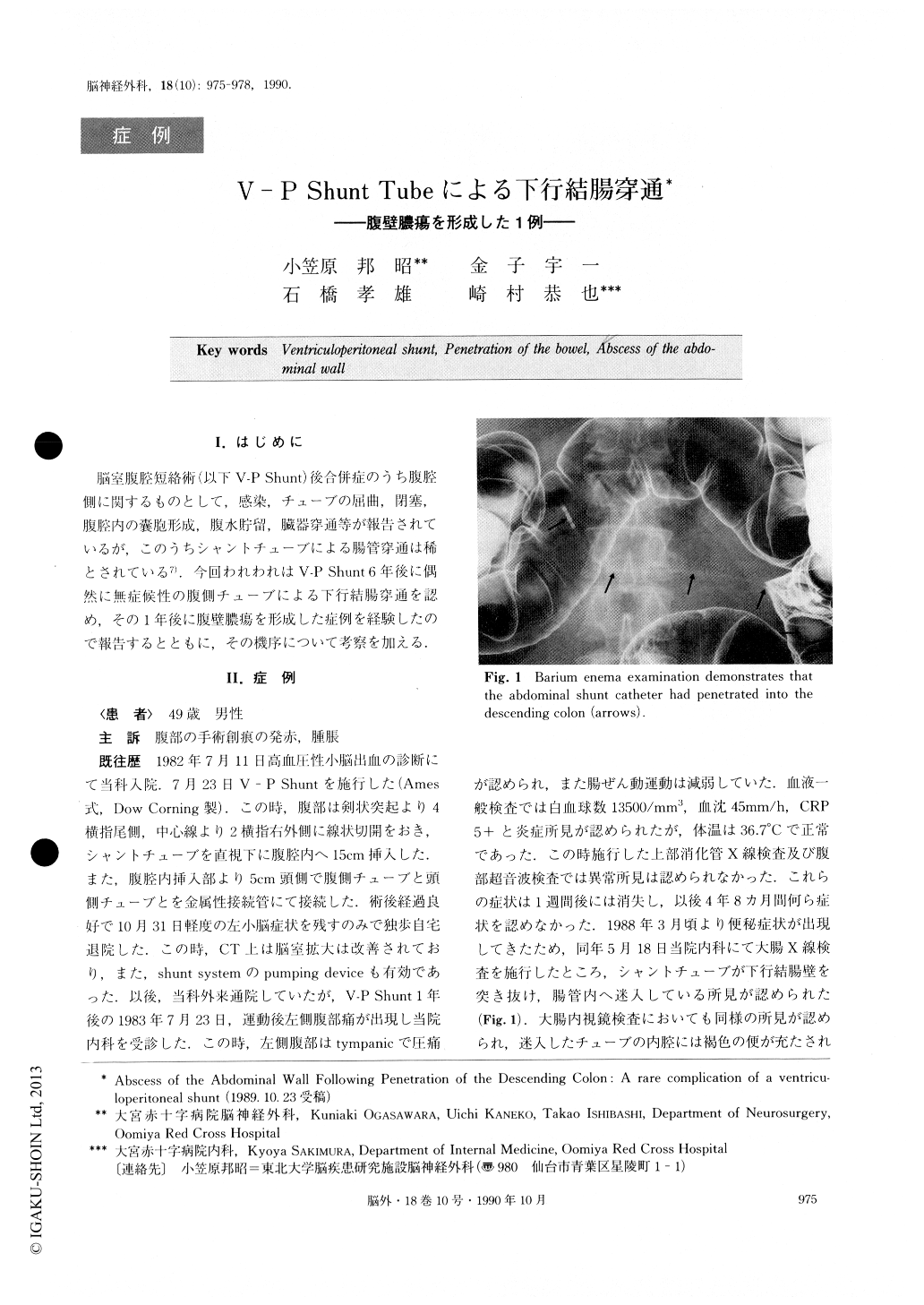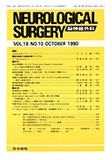Japanese
English
- 有料閲覧
- Abstract 文献概要
- 1ページ目 Look Inside
I.はじめに
脳室腹腔短絡術(以下V-P Shunt)後合併症のうち腹腔側に関するものとして,感染,チューブの屈曲,閉塞,腹腔内の嚢胞形成,腹水貯留,臓器穿通等が報告されているが,このうちシャントチューブによる腸管穿通は稀とされている7).今回われわれはV-P Shunt6年後に偶然に無症候性の腹側チューブによる下行結腸穿通を認め,その1年後に腹壁膿瘍を形成した症例を経験したので報告するとともに,その機序について考察を加える.
A case of abscess of the abdominal wall associated with a ventriculoperitoneal (V-P) shunt following penetration into the descending colon is reported. A 49-year-old male was diagnosed as having hypertensive intracerebellar hematoma with hydrocephalus, and he was treated by V-P shunt. One year later he experienced left hypochondrial pain with rebound tenderness during a period of one week. He was doing well until 4 years and 10 months after, when barium enema examination and colonoscopy incidentally demonstrated that the abdominal catheter had penetrated into the descending colon. However, he had no symptoms. He remained in good health during a period of observation. A year later he was readmitted to our department with an abscess of the abdominal wall. Plain radiograph of the abdomen demonstrated disconnection of the shunt catheter and it was thought that the abdominal catheter had been passed via the rectum. At operation a subcutaneous abscess was found and cultures grew proteus mirabilis.
We discussed the mechanism of the developing of the abscess on the abdominal wall following penetration of the bowel. It is believed that abscess of the abdominal wall may occur due to spontaneous extraction of a previously inserted shunt catheter which has penetrated into the bowel.

Copyright © 1990, Igaku-Shoin Ltd. All rights reserved.


